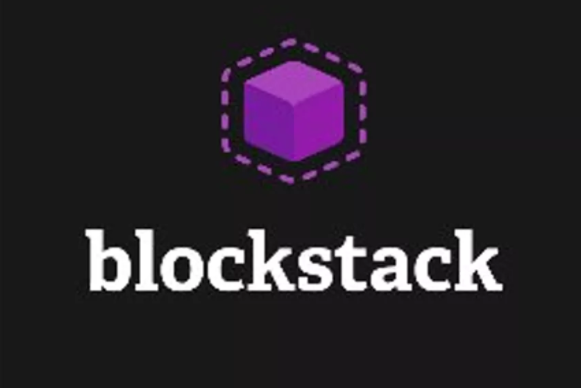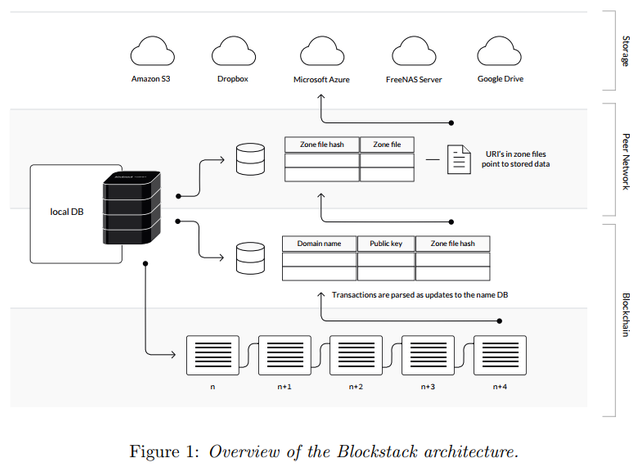Checking Out Blockstack, Part 2
Yesterday I did a first look into Blockstack, a company building the new decentralized internet. You can find that article here.
As I wrote then, there’s a lot to Blockstack, so I promised to go into more detail in the future. Today we’ll look at the Blockstack architecture.

Blockstack uses the existing internet transport layer, TCP, and underlying communication protocols and focuses on removing points of centralization that exist at the application layer.
Per Blockstack, creating a fully decentralized internet requires core internet components like DNS, public-key infrastructure, and storage backends. It also needs comparable performance and scalability to the current internet.
The Blockstack architecture has three layers: blockchain, peer network, and storage. See the graphic below.
Layer 1: Blockchain
Provides the storage medium for operations and it provides consensus on the order in which the operations were written.
Virtualchain encodes operations in transactions on the underlying blockchain as metadata. Blockchain nodes do not see the raw transactions, but the logic to process virtualchain operations exists at the virtualchain level.
Layer 2: Peer Network
Used for discovery and is part of the data plane. The Blockstack architecture separates the task of discovering resources from the actual storage of data. Uses zone files for storing routing information, which are identical to DNS zone files in format.
Users do not need to trust the discovery layer because the integrity of any data record in the discovery layer can be verified by checking the respective hash of that data record in the control plane.
The Atlas network stores the zone files. Zone files can only be written if hash was previously announced in the blockchain. Zone files are small and nodes maintain a full copy.

Layer 3: Storage
Hosts the actual data and is part of the data plane. All stored data values are signed by an owner key defined in the control plane.
By storing data values outside of the blockchain, Blockstack allows values of arbitrary size and allows for a variety of storage backends. Users do not need to trust the storage layer and can verify their integrity in the control plane.
Blockstack uses a decentralized naming system called the Blockchain Name System (BNS). It defines values in a virtualchain and stores the discovery data in a peer network called the Atlas Network.
That’s enough to chew on for one day.
More on Blockstack in the future.
super every day I learn something new, thank you for sharing
Thanks for reading!
new internet
great idea
its not an easy task to achieve which makes the project great
agreed
I feel like this can be the next big thing in this decade... But's maybe it's even harder for everyone to switch than the technology itself?
Works right on top of your normal web browser. Check it out.
Resteemed by @resteembot! Good Luck!
Curious?
The @resteembot's introduction post
The @reblogger's introduction post
Get more from @resteembot with the #resteembotsentme initiative
Check out the great posts I already resteemed.
Really nice & smart post....!!...I like it.👌
Thanks!
Thats a really good post (voted) i need upvote my comments i am happy
thanks!
supper post.
yum
Interesting... I guess I must be a little out of the loop as I had not even heard of this project. Have to check it out...
this project is known
This post has received a 4.52 % upvote from @buildawhale thanks to: @g-dubs. Send at least 1 SBD to @buildawhale with a post link in the memo field for a portion of the next vote.
To support our daily curation initiative, please vote on my owner, @themarkymark, as a Steem Witness